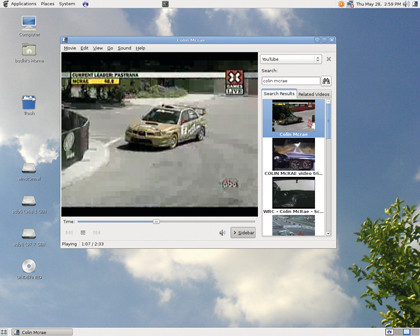6 of the best video players for Linux
But which is the best of the video-playing bunch?
If you're running a popular Linux distro, chances are you already have Totem on your system. Totem is the default video player on Gnome installations of almost every popular Linux distro, including Ubuntu, Mandriva, and Fedora.
Totem's tight integration with Gnome has obvious advantages. The Nautilus file manager will display thumbnails of videos and list details about them, such as their codecs, dimension, duration, and so on. Most distros also ship the Totem Firefox plugin for playback in your browser.

SCREEN ANNOTATIONS: With the relevant plugin installed, Totem can enable telestrator-like annotations on your screen using Gromit
The best thing about Totem, though, is its simple, clean design that still packs in plenty of functionality. For example, it has no trouble piping fullscreen videos to multihead Xinerama setups, not forgetting devices connected via TV-out. You can also adjust brightness, contrast, and saturation of the video during playback.
Totem can be controlled with the keyboard, mouse, or a LIRC-supported remote. However, not all features are available on the interface. For example, if Totem doesn't pick up your subtitles automatically, you have to load them manually from the command-line.
Totem is powered by the GStreamer multimedia framework, which supplies the player with all its codecs and drivers. Also included is the GStreamer FFmpeg plugin, which includes codecs from the FFmpeg project. Then there's the Pitfdll plugin, which allows Totem access to binary files, including Quicktime QTX or Directshow/DMO DLLs. This enables it to play proprietary file formats such as WMV 9 and Intel Indeo 5.
Verdict Totem Version: 2.26.1
Website: www.gnome.org/projects/totem
Price: Free under GPL
Outputs videos in various formats and can capture audio, but it's just too unstable at the moment.
Rating: 7/10
Get daily insight, inspiration and deals in your inbox
Sign up for breaking news, reviews, opinion, top tech deals, and more.
With almost two decades of writing and reporting on Linux, Mayank Sharma would like everyone to think he’s TechRadar Pro’s expert on the topic. Of course, he’s just as interested in other computing topics, particularly cybersecurity, cloud, containers, and coding.
